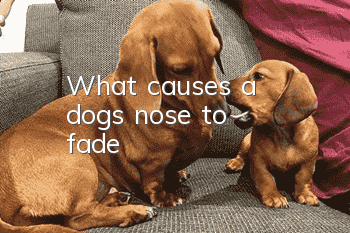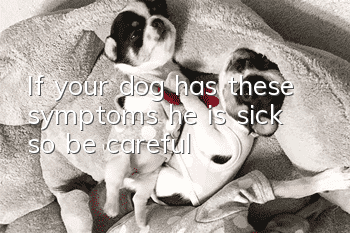What causes a dog's nose to fade?

Usually the noses of dogs we see are black. If a dog’s nose fades, the owner will inevitably be nervous and worried! Dogs’ noses come in different colors, usually black, dark brown, pink or the same color as their own hair. , mostly black.
The formation, metabolism, and regulation mechanisms of melanin are relatively complex. Problems in any of these links may affect the formation of melanin.
The discoloration of a dog’s nose is mostly due to the following reasons:
1. Seasonal factors
Some friends find that the color of their dog's nose becomes lighter in winter and gradually turns darker in summer.
This is because what affects melanin deposition is "amino acid oxidase"
Amino acid oxidase is very sensitive to temperature, and its effect is stronger in high-temperature environments. This is why the nose is darker in summer and lighter in winter.
If the discoloration of the nose is caused by seasonal reasons, don’t worry, the color will return in another season.
2. Aging
Just like human hair turns gray as people age, after dogs age, the effect of amino acid oxidase becomes smaller and melanin deposition will decrease. After the melanin is reduced, the color of the dog's nose will become lighter, not as it was when it was a puppy. black.
3. Trauma and skin diseases
If a dog’s nose is scratched or scratched, the color of the nose will become lighter, and the color of the nose will return after recovery.
Skin allergies, skin fungal infections, etc., if they cause damage to the basal layer of the skin, may also affect the normal metabolism of melanin, causing the tip of the nose to fade.
4. Autoimmune diseases
Autoimmune diseases refer to diseases caused by the body's immune response to its own antigens, resulting in damage to its own tissues.
To put it simply, the body recognizes the melanocytes produced by itself as "foreign matter" and produces corresponding antibodies to destroy them.
At present, there are many autoimmune diseases that can cause discoloration of dog noses, including vitiligo, lupus erythematosus, pemphigus vulgaris, etc.
5. Heredity
Genetic diversity creates diversity in dog breeds. If a dog’s nose is not black, it may be a genetic problem. This kind of nose discoloration mainly occurs in light-colored dogs, such as golden retrievers, Samoyeds, Labradors, etc.wait.
Due to the diversity and variability of genes, there may also be recessive inheritance. The fact that nose discoloration does not occur in the ancestors does not mean that it will not occur in the offspring.
6. Endocrine factors
A variety of endocrine hormones affect the formation of melanin. For example, estrogen can stimulate melanocytes to secrete melanin, which is why the color of the nose of many female dogs changes during estrus and pregnancy.
In addition, melanin-stimulating hormone, adrenocortical hormone, melatonin, etc. are also one of the causes of nose discoloration. For such diseases, endocrine regulation is the key.
7. Lack of trace elements and vitamins
Trace elements play an important role in the formation of melanin, especially copper ions and zinc ions, which have a greater impact. If your dog’s daily nutritional intake of trace elements is insufficient, it may cause the dog’s nose to discolor.
B vitamins can promote metabolism in animals and are indispensable substances for converting heat energy. If lacking, cell function will decline, causing metabolic disorders.
How to alleviate the discoloration of the dog’s nose?
Seasonal changes, aging, genetics and other factors are inevitable for us,
But the discoloration of the nose caused by other factors can be improved through daily conditioning.
Supplement trace elements and vitamins
Although the content of trace elements in pets is small, they are very necessary to maintain normal metabolism. It plays a very important role in the formation of melanin.
Vitamin B can help melanin deposition, and vitamin C can promote the absorption of vitamin B. A complete multivitamin that can meet the nutritional needs of pets for normal growth and development.
Replace plastic utensils
Some dogs are allergic to plastic products. For these dogs, try to avoid plastic materials when choosing their daily necessities (rice bowls, toys, etc.).
In addition to the above, you can also take your dog to bask in the sun. It can not only sterilize and disinfect, but also help to make the hair beautiful and the nose black. However, you must be careful not to expose yourself to the sun to prevent heat stroke and ultraviolet sunburn.
- What’s wrong with the green eye droppings in dogs?
- What should dogs eat to detoxify after eating onions?
- Four tips to correct your dog’s barking habit
- Precautions for bathing long-haired dogs
- What are the causes of dog infertility?
- How to take care of your dog’s ears daily
- Do all dog owners know the common sense about a dog’s menstrual period?
- How much does a Corgi cost and is it easy to raise? Corgi pictures | price | training
- How to prevent skin diseases in golden retrievers
- Genetic characteristics and selection methods of excellent dog quality



